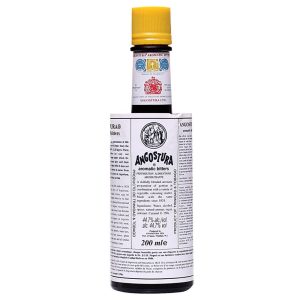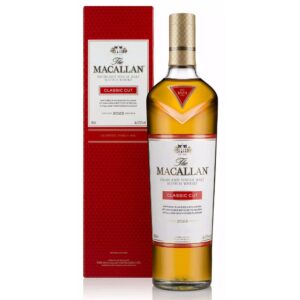Discover the bold and robust world of Vino Tannat, the red wine that’s capturing the hearts of enthusiasts globally. Originating from the South West of France and flourishing in Uruguay, Vino Tannat is renowned for its rich flavor profile, deep color, and healthful antioxidants. This comprehensive guide dives into the origins, characteristics, and culinary pairings of Vino Tannat, making it your go-to resource for everything related to this unique varietal.

The Origins of Vino Tannat
Vino Tannat’s journey begins in the Madiran region of France, where it was traditionally known for its robust tannins and aging potential. However, it’s in the sun-drenched lands of Uruguay that Tannat has truly found its second home, becoming the national grape and gaining international acclaim for its softer, more approachable style compared to its French counterpart.
Characteristics of Vino Tannat
What sets Vino Tannat apart is its high tannin content, which contributes to the wine’s structure and longevity. With a deep, almost opaque color, Vino Tannat boasts a complex bouquet of dark fruits, such as blackberries and plums, and sometimes hints of smoke or chocolate, depending on the region and winemaking practices. This full-bodied wine is not only a delight to the palate but also boasts health benefits due to its high levels of antioxidants.
The Evolution of Tannat Winemaking Techniques
The winemaking techniques for Tannat have undergone significant evolution, particularly as winemakers aim to tame the grape’s naturally high tannin levels while preserving its rich flavors and health benefits. Originally, in the Madiran region of France, traditional methods such as extended maceration were used to extract deep color and structure, resulting in wines with formidable tannins suited for long aging. However, the introduction of modern winemaking techniques, including micro-oxygenation, has been a game-changer for Tannat wines. This process involves introducing small amounts of oxygen during fermentation, which softens the tannins and makes the wine more approachable at a younger age. In Uruguay, where Tannat has found a new identity, winemakers often employ a combination of old-world and innovative techniques, focusing on fruit-forward expressions that highlight the varietal’s versatility. These advancements have not only made Tannat wines more accessible to a broader audience but have also showcased the grape’s potential for both complexity and elegance, marking a new chapter in the story of this robust varietal.
Culinary Pairings with Vino Tannat
The robust nature of Vino Tannat makes it an excellent companion to hearty dishes. It pairs splendidly with red meats, barbecue, and rich stews, where the wine’s tannins soften against the fats and proteins of the food, creating a harmonious dining experience. For a cheese pairing, opt for aged varieties that can stand up to the wine’s boldness.
Vino Tannat in Winemaking
Winemakers in Uruguay and France employ different techniques to harness the best of what Tannat has to offer. In Uruguay, the focus is on creating a more fruit-forward and accessible wine, often through careful vineyard management and modern winemaking techniques. In France, traditional methods still prevail, producing wines that are powerful and structured, with great aging potential.

The Cultural Significance of Tannat in Uruguay
In Uruguay, Tannat is more than just a grape variety; it’s a symbol of national pride and cultural identity. Since its introduction from France in the 19th century, Tannat has thrived in Uruguay’s climate, becoming the most planted and celebrated grape in the country. This deep connection is evident not only in the wine itself but in the way Tannat has been embraced by the Uruguayan people. It is central to social gatherings and celebrations, reflecting the warmth and hospitality of the Uruguayan culture. The grape’s success in Uruguay has fostered a sense of unity and distinction, setting the country apart on the international wine scene. Tannat Day, celebrated on April 14th, exemplifies its cultural significance, as it’s a day dedicated to honoring this beloved grape. Through Tannat, Uruguay has carved out a unique space in the world of wine, showcasing the rich tapestry of its wine heritage and the enduring spirit of its people.
Tannat Wine Regions Beyond France and Uruguay
While France and Uruguay are the most renowned regions for Vino Tannat, the grape’s adaptability has led to its cultivation in other parts of the world, broadening the spectrum of Tannat wines available. In the United States, particularly in regions like California and Virginia, winemakers have started to experiment with Tannat, producing wines that showcase the varietal’s versatility outside its traditional terroirs. These American Tannats often blend the robust tannins and dark fruit flavors characteristic of the grape with a unique local twist, reflecting the diverse climates and winemaking philosophies of their new homes. Similarly, in Argentina and Brazil, Tannat is gaining a foothold, benefiting from the South American sun to produce wines that are both powerful and refined. These emerging Tannat wine regions contribute to the global tapestry of this varietal, offering wine enthusiasts a wider array of flavors and styles to explore and enjoy.
Health Benefits of Vino Tannat
Vino Tannat is not only praised for its taste but also for its healthful properties. Rich in procyanidins, antioxidants that are beneficial for heart health, Tannat is considered one of the healthier red wine options available. Enjoying a glass of Vino Tannat could be a delightful way to contribute to a healthy lifestyle.
Conclusion
Vino Tannat is a wine that challenges and rewards, offering a robust experience that differs significantly from lighter reds. Whether you’re drawn to the complex, age-worthy Tannats of France or the fruitier, more accessible versions from Uruguay, this wine promises a journey through intense flavors and rich history. As Vino Tannat continues to gain popularity among wine lovers around the world, now is the perfect time to explore this unique varietal and discover what makes it a standout choice for your wine collection.












